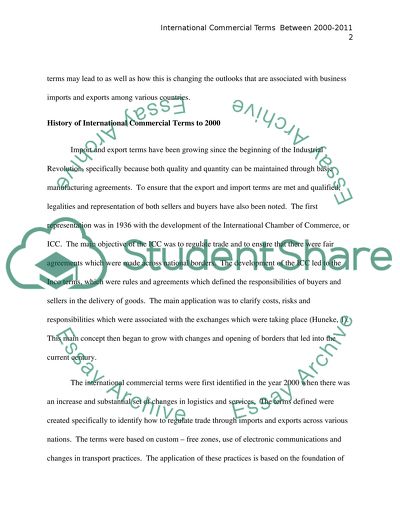Cite this document
(“Differences between the old version of the international commercial Essay”, n.d.)
Differences between the old version of the international commercial Essay. Retrieved from https://studentshare.org/miscellaneous/1572970-differences-between-the-old-version-of-the-international-commercial-terms-2000and-the-new-ones-2011
Differences between the old version of the international commercial Essay. Retrieved from https://studentshare.org/miscellaneous/1572970-differences-between-the-old-version-of-the-international-commercial-terms-2000and-the-new-ones-2011
(Differences Between the Old Version of the International Commercial Essay)
Differences Between the Old Version of the International Commercial Essay. https://studentshare.org/miscellaneous/1572970-differences-between-the-old-version-of-the-international-commercial-terms-2000and-the-new-ones-2011.
Differences Between the Old Version of the International Commercial Essay. https://studentshare.org/miscellaneous/1572970-differences-between-the-old-version-of-the-international-commercial-terms-2000and-the-new-ones-2011.
“Differences Between the Old Version of the International Commercial Essay”, n.d. https://studentshare.org/miscellaneous/1572970-differences-between-the-old-version-of-the-international-commercial-terms-2000and-the-new-ones-2011.


